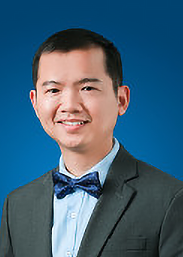USTC Astronomy Colloquium Series: 2022 Spring
The Near-field Universe Investigation through Chemistry
汤柏添 副教授
中山大学
2022/06/07, 4:00pm , 腾讯会议ID:685-754-528

报告人:
汤柏添,现任物理与天文学院副教授,博士生导师。个人研究兴趣主要是利用恒星在光学及近红外波段发出的光线来了解恒星集团(包括星团、银河系及河外星系)的演化。曾经多次获得Magellan, GTC, CFHT等国际大望远镜时间,并参与观测。曾参加APOGEE,Gaia-ESO和LAMOST等国内外大型光谱巡天项目,并发表文章。至今已在ApJ, MNRAS, A&A等知名天文杂志发表文章50余篇,引用1500余次。主持国家自然科学基金一项。摘要:
The lambda-CDM model is by far the most successful cosmological model, but it still shows inconsistence with observations at small scale. Investigation of the co-evolution among Milky Way, dwarf galaxies (DGs), and globular clusters (GCs) is the key to address this issue. With the arrival of large spectroscopic surveys (e.g., LAMOST, APOGEE) and photometric/astrometric surveys (e.g, Gaia mission), we see a quantum leap in the astrophysical information available, including chemistry, dynamics, ages, etc., leading to a whole new picture of our local Universe. Using chemical abundances as the tracers for Galactic Archeology, we study the stellar evolution details in Sculptor dwarf galaxies, and search for GC escapees that may witnessed the MW-DG-GC co-evolution. 邮编:230026 ,
邮编:230026 ,  联系电话: 0551-63601861
联系电话: 0551-63601861 Email:
Email: